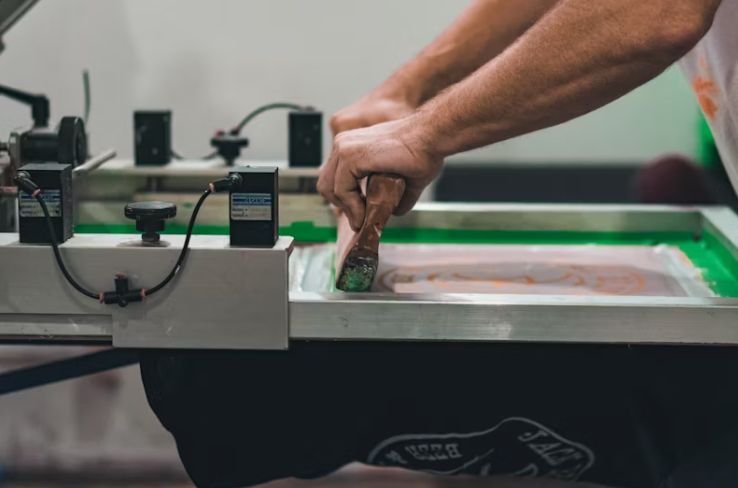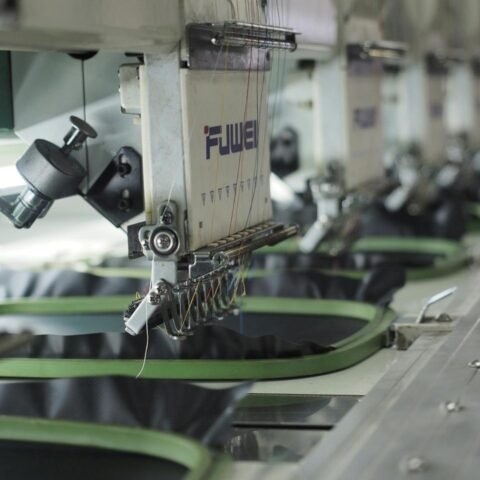Rush Printing: How We Cranked 2,000 Shirts in 3 Days
In the world of custom apparel, deadlines are everything. Clients expect flawless prints, fast turnaround, and zero excuses. But when an urgent order hits — one that demands hundreds or even thousands of shirts in a matter of days — only the most organized, experienced, and well-equipped print operations can deliver.
This article breaks down how our team successfully produced 2,000 fully printed, packed, and delivered T-shirts in just three days, without compromising on quality. The process wasn’t luck — it was structure, systems, and teamwork.
1. Immediate Intake and Job Assessment
Rush jobs begin with clarity. The moment a high-volume, tight-deadline order lands, the first step is to gather every critical detail immediately — garment type, colors, design complexity, placement, and delivery timeline.
In this particular case, the client required multiple sizes, a single design printed on both sides, and strict color accuracy. That meant no time for back-and-forths or redesigns. We initiated a same-hour intake meeting with our production manager, designer, and press lead to confirm artwork, pricing, and delivery logistics all at once.
A clearly documented production timeline prevented guesswork later.
2. File Preparation and Color Separation
Before a single screen is burned or ink mixed, the artwork has to be perfectly formatted. That means high-resolution vector files, correctly separated by color, and matched with corresponding Pantone codes.
For rush projects, the smallest design inefficiency can cost hours. Our in-house designer optimized the artwork to reduce from four colors to two, minimizing screen changes while maintaining brand integrity. This saved close to three hours of setup time.
Proper preparation at this stage is the difference between chaos and control.
3. Material Sourcing and Inventory Check
While the artwork was finalized, our operations lead performed an immediate stock verification. Nothing slows production like missing sizes or out-of-stock colors.
Fortunately, we maintain a rolling inventory of popular garment styles, allowing same-day pickup from local distributors when required. The blank shirts were ordered by 11 a.m. and arrived in-house before 4 p.m. — a crucial window that ensured Day 1 ended with everything ready for production setup.
For print shops without such systems, advance supplier relationships are non-negotiable.
4. Screen Preparation and Machine Scheduling
Rush jobs demand parallel workflows. As soon as the artwork was approved, screen coating, drying, and exposure began.
To eliminate bottlenecks, each printing machine was assigned a dedicated operator. Our automated carousel press was prioritized for larger runs, while manual presses handled smaller size splits and reprints. This division created a constant production rhythm rather than long idle gaps.
In high-volume printing, scheduling machines like a chessboard is key — one mistake, and the entire timeline collapses.
5. Ink Mixing and Color Matching
Ink formulation can be deceptively time-consuming. Each color must match brand guidelines under different lighting and garment types.
We used a digital color-matching system to blend exact Pantone shades, preparing multiple batches in advance. For dark shirts, an underbase white was pre-mixed and tested early, avoiding print delays later.
This approach meant that when presses started running, operators weren’t pausing mid-run to remix inks — a common cause of lost hours in rush scenarios.
6. Production Line Setup
Before production officially began, a dry run was performed. Screens were locked in, alignment tested, and off-press samples inspected.
Our QA (Quality Assurance) team evaluated print placement, curing temperature, and color density. Once confirmed, presses ran continuously in 8-hour cycles with scheduled 15-minute resets for cleaning and inspection.
Every 50 shirts were checked for alignment and ink consistency. By maintaining micro-checkpoints rather than post-print reviews, we avoided large-scale reprints.
7. Staff Rotation and Efficiency Control
Fatigue is the hidden enemy of speed. Printing thousands of garments in short bursts can lead to human error if energy dips.
We assigned two-person teams per press, rotating every few hours to maintain focus. One handled shirt loading, the other managed pull and inspection. This rhythm reduced physical strain and kept output consistent.
It may sound procedural, but human stamina is a production factor as critical as any machine setting.
8. Curing, Folding, and Packaging
Once shirts rolled off the press, they passed directly into our conveyor dryer system for curing. Curing temperatures were adjusted for different fabric blends to prevent scorching or under-curing.
Immediately after cooling, shirts were counted, folded, and sorted by size. We used color-coded bins for each size group to prevent mix-ups during boxing. Packaging stations were set up beside the dryers — saving walking time and keeping the process linear.
By the end of Day 2, we had 1,300 shirts completed and boxed. Efficiency isn’t about working faster — it’s about eliminating unnecessary motion.
9. Quality Control and Final Touches
On Day 3, production finished by noon. The remaining time was dedicated purely to inspection and presentation.
Every single shirt was checked under uniform lighting for print accuracy, ink density, and curing quality. We used a handheld stretch test to ensure durability and visually verified tag alignment and logo position.
Minor corrections — stray fibers, smudges, or off-center prints — were addressed immediately. Rush or not, compromised quality is never an option. The finished boxes were then labeled, sealed, and palletized for dispatch.
We delivered ahead of the client’s deadline by five hours.
10. Lessons Learned and Repeatable Systems
Rush projects reveal the weak spots in any workflow. What worked here — and continues to serve future jobs — was building a repeatable rush-order protocol.
That includes:
- Pre-set templates for intake and approval forms
- Real-time job tracking dashboards
- Pre-mixed standard ink palettes for top clients
- Standing agreements with local blank suppliers
With these systems in place, our team can now confidently take on similar orders with predictable outcomes, instead of panic.
What was once a challenge has become a competitive advantage — proving that speed and quality can coexist when your process is built right.
Final Thoughts
Printing 2,000 shirts in three days isn’t about working miracles; it’s about working systematically. Every step — from design optimization to shift rotation — builds toward reliability under pressure.
In an industry where deadlines define reputation, the ability to handle urgency without error is what separates professional print shops from everyone else.
The takeaway? Don’t fear rush jobs.
Plan for them.
Build your systems, train your people, and when the next impossible order hits your inbox — you’ll already know how to deliver it.




